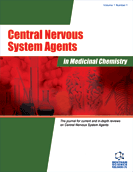
Full text loading...
A small, translucent nematode known as Caenorhabditis elegans, or C. elegans, is frequently utilized as a model organism in biomedical studies. These worms, which are around 1 mm long and feed on bacteria, are usually found in soil. For accessible and effective research on genetics, developmental biology, neuroscience, cell biology, and aging, C. elegans provide an ideal model. Its simplicity, which includes a translucent body and a nervous system with only 302 neurons, makes it possible to see cellular and developmental processes in great detail. Because of its special benefits, the worm Caenorhabditis elegans allows for a thorough characterization of the cellular and molecular processes causing age-related neurodegenerative diseases.
This is a general review of the life cycle, experimental methodologies, and the use of C. elegans to model brain diseases, including those related to molecular and genetic factors that cause neurodegenerative diseases. Additionally, we go over how C. elegans is a perfect model organism for studying neurons in instances of prevalent age-related neurodegenerative illnesses due to a combination of its biological traits and new analytical techniques.
The literature review process was carried out step-by-step using online search databases such as Web of Science, PubMED, Embase, Google Scholar, Medline, and Google Patents. In the first searches, keywords like C.elegans, disease modelling, and neuroprotective activity were employed.
Because of C. elegans's physiological transparency, it is possible to track the development of neurodegeneration in aging organisms by using co-expressed fluorescent proteins. Importantly, a fully characterized connectome provides a unique ability to precisely connect cellular death with behavioural instability or phenotypic diversity in vivo, thus permitting a deep knowledge of the detrimental effect of neurodegeneration on wellbeing.
In addition, pharmacological therapies and both forward and reverse gene screening speed up the discovery of modifiers that change neurodegeneration. These chemical-genetic investigations work together to determine important threshold states that either increase or decrease cellular stress in order to unravel related pathways.

Article metrics loading...

Full text loading...
References


Data & Media loading...

